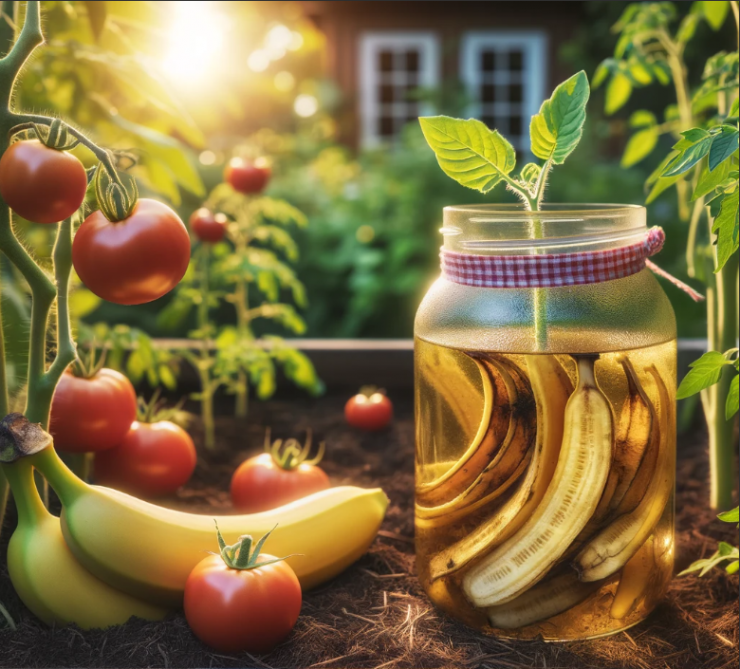Tomato plants, with their deep red bounty, are a staple in home gardens around the world. Rich in nutrients, tomatoes demand a fertile and well-balanced soil environment to thrive. One innovative and sustainable way to provide these essential nutrients is by using banana peels. Banana peel water is an eco-friendly, cost-effective fertilizer that is easy to make and provides a potassium-rich boost to your tomato plants. Here’s how to prepare and use banana peel water to ensure your tomato plants grow healthy and produce an abundant harvest.
Why Banana Peel Water?
Banana peels are rich in potassium, an essential nutrient that plays a crucial role in plant health. Potassium helps with plant growth, photosynthesis, protein synthesis, and disease resistance. Additionally, banana peels contain other nutrients such as phosphorus, calcium, and magnesium, which are beneficial to the soil and plant growth. Banana peel water is a simple way to recycle kitchen waste into a valuable garden resource, promoting sustainable gardening practices.
Ingredients and Tools
Banana peels (The number depends on the size of your container and the amount of water you plan to use.)
Water
A container with a lid (a jar, a jug, or a bucket)
A strainer
Instructions
Collect Banana Peels: Save the peels from bananas you consume. You can store them in the freezer until you have enough to make a batch of banana peel water.
Prepare the Container: Take your container and ensure it is clean. The size of the container will depend on how much banana peel water you wish to make.
Add Banana Peels to the Container: Fill the container with banana peels. You don’t need to chop them up, but doing so can help them break down faster.
Add Water: Fill the container with water, making sure the banana peels are fully submerged. Tap water is fine, but if your tap water is heavily chlorinated, let it sit out for a day before using it to allow the chlorine to evaporate, or use rainwater.
Let It Steep: Close the container with its lid and let the mixture sit for about a week. This period allows the nutrients from the peels to leach into the water. Store the container in a cool, dark place to prevent fermentation or mold growth.
Strain the Water: After a week, open the container and strain the banana peel water into another container. The remaining banana peels can be composted or buried in soil as additional fertilizer.
Use Banana Peel Water: Dilute the banana peel water with plain water at a ratio of 1:5 (one part banana peel water to five parts water) to prevent over-fertilization. Water your tomato plants at the base with this solution. It’s best used during the watering schedule, not as a replacement for regular watering.
Tips for Best Results
Use banana peel water once every two to four weeks. This frequency provides a steady supply of nutrients without overwhelming the plants.
Monitor your tomato plants for signs of nutrient overdose, such as yellowing leaves or slow growth, and adjust the frequency accordingly.
Combine banana peel water with other organic gardening practices, such as composting and mulching, for a holistic approach to garden health.
By making and using banana peel water, you’re not just feeding your tomato plants; you’re also embracing a cycle of sustainability that enriches your garden and minimizes waste. This simple, yet effective method is a testament to the power of natural gardening techniques and their impact on plant health and productivity.






Add comment